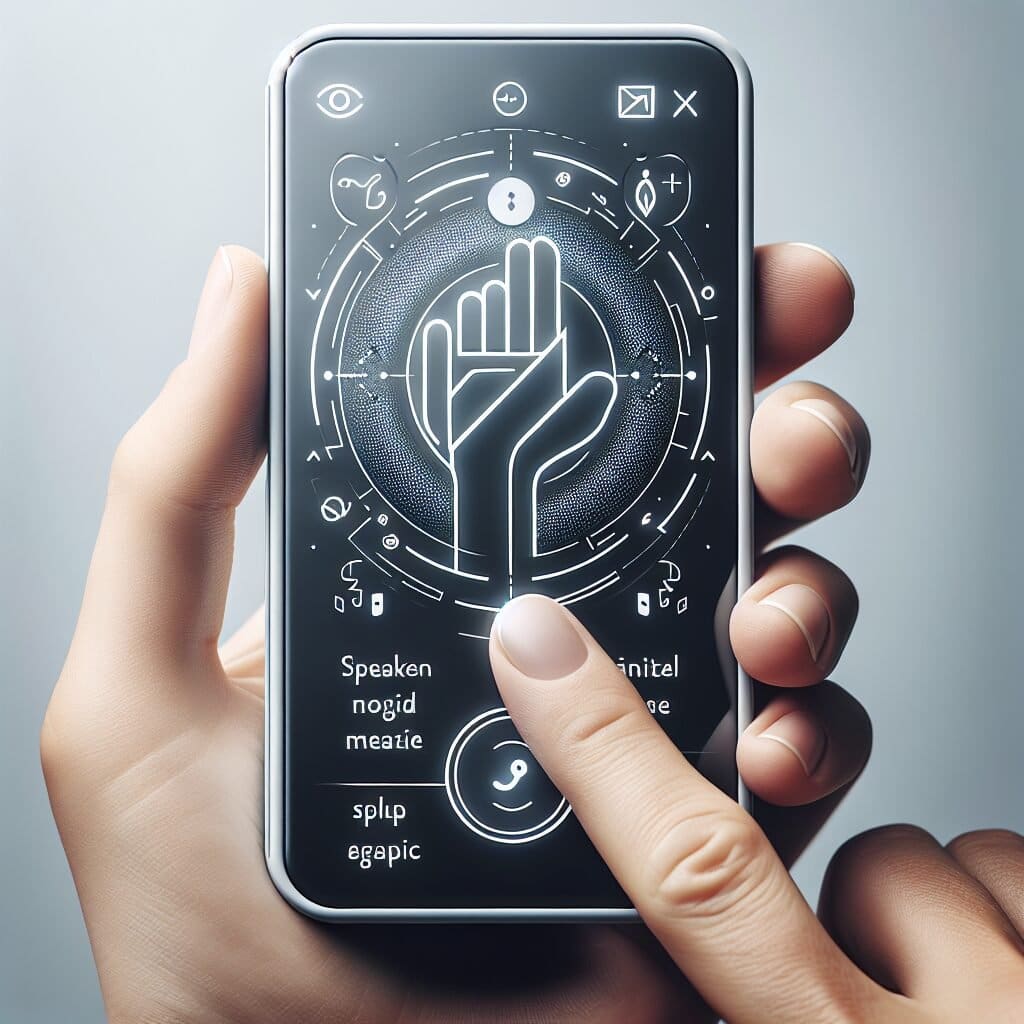Imagine a world where communication barriers are effortlessly dismantled, where misunderstandings become non-existent, and where everyone, regardless of their hearing abilities, can engage in seamless conversations. This is no longer a far-fetched dream, as the future of communication has arrived with the advent of instant language translators for the deaf. With this groundbreaking technology, communication becomes instantly accessible and inclusive for deaf individuals, empowering them to express themselves and connect with others from all walks of life. The days of relying solely on sign language or written messages are coming to an end, as the future of communication welcomes a revolutionary tool that is set to change the world for the better.
The Importance of Communication for the Deaf
Challenges faced by the deaf community
For individuals who are deaf or hard of hearing, communication can be a significant challenge in their daily lives. Without the ability to hear, they may struggle to understand spoken language and express their thoughts and feelings effectively. This can lead to feelings of isolation and frustration, as well as difficulties in social interactions, education, and professional settings.
The role of language in communication
Language plays a crucial role in communication, allowing individuals to convey ideas, emotions, and information. For the deaf community, sign language is their primary mode of communication. Sign language is a visual language that uses a combination of gestures, facial expressions, and body movements to convey meaning. It is a rich and complex language with its own grammar and syntax.
Existing communication tools for the deaf
Over the years, various communication tools have been developed to facilitate communication for the deaf community. These include text messaging, email, video relay services, and note-taking apps. While these tools have undoubtedly improved the accessibility of communication for the deaf, they are not without limitations. They often require the presence of an intermediary, may not be available in all situations, and do not provide real-time translation capabilities.
Understanding Instant Language Translation
What is instant language translation?
Instant language translation refers to the ability to translate spoken language into another language in real-time. It allows individuals who speak different languages to converse and understand each other without the need for an interpreter. In the context of the deaf community, instant language translation technologies aim to bridge the communication gap between deaf and hearing individuals by translating spoken language into sign language and vice versa.
How does it work?
Instant language translation relies on advanced technologies such as artificial intelligence (AI) and machine learning. These technologies analyze spoken language patterns, contexts, and nuances to generate accurate translations. For speech-to-sign translation, the system converts the spoken language into sign language using 3D avatars or animated characters. Conversely, sign-to-speech translation involves capturing and analyzing sign language gestures to produce spoken language output.
Benefits of instant language translation for the deaf
Instant language translation holds tremendous potential for the deaf community. It enables deaf individuals to communicate more easily with hearing individuals in real-time, breaking down barriers and fostering inclusivity. It enhances their ability to participate in social activities, access educational resources, and engage in professional settings. Additionally, instant language translation opens up opportunities for cultural exchange and collaboration on a global scale.
Technological Advancements in Instant Language Translation
Artificial intelligence and machine learning
Artificial intelligence and machine learning algorithms are at the forefront of technological advancements in instant language translation. These technologies enable systems to continuously learn and improve their translation capabilities based on vast amounts of data. As more data is processed, the accuracy and speed of translations are enhanced, providing a better user experience for both deaf and hearing individuals.
Speech and sign language recognition
Accurate speech and sign language recognition are essential components of instant language translation systems. Speech recognition algorithms convert spoken language into text, which is then translated into sign language. On the other hand, sign language recognition algorithms analyze and interpret sign language gestures, converting them into spoken language or text. Advances in deep learning and computer vision have significantly improved the accuracy and efficiency of these recognition systems.
Real-time translation capabilities
Real-time translation capabilities are a key objective of instant language translation technologies. These systems aim to provide immediate translations, ensuring smooth and efficient communication between deaf and hearing individuals. The ability to process and translate language in real-time is a significant breakthrough, allowing for seamless conversations and reducing communication barriers.
Current Instant Language Translation Solutions for the Deaf
Mobile applications
Mobile applications have become increasingly popular for instant language translation. There are now a variety of apps available that offer speech-to-sign and sign-to-speech translation capabilities. These apps typically utilize the built-in microphones and cameras of smartphones to capture and process audio and visual inputs. They provide a portable and convenient solution for deaf individuals to communicate with hearing individuals in various settings.
Wearable devices
Wearable devices, such as smartwatches or wristbands, are emerging as another option for instant language translation for the deaf. These devices can capture spoken language input and display the corresponding sign language gestures on a small screen, allowing for discreet and immediate translation. Wearable devices offer a hands-free and unobtrusive solution that can greatly enhance communication accessibility for the deaf.
Smart glasses
Smart glasses with integrated instant language translation capabilities are also being developed. These glasses use augmented reality technology to overlay translated sign language gestures onto the wearer's field of view. This enables a more immersive and natural conversation experience, as hearing individuals can directly see the translation in real-time. While still in the early stages of development, smart glasses have the potential to revolutionize communication for the deaf community.
Challenges and Limitations of Existing Solutions
Accuracy and reliability issues
One of the primary challenges of instant language translation systems is ensuring accuracy and reliability. The complexities of language, including regional dialects, accents, and nuances, make it difficult for systems to achieve 100% accuracy in translation. Improvements are continuously being made to address these challenges, but there is still room for improvement to ensure that translations are as precise as possible.
Limited language support
Another limitation of existing instant language translation solutions is the limited language support. Different sign languages exist around the world, and translating between them is a complex task. Currently, many systems focus primarily on American Sign Language (ASL) or a select few sign languages. Providing support for a wider range of sign languages is crucial to maximize the accessibility and impact of instant language translation for the global deaf community.
Cost and accessibility barriers
Cost and accessibility are also important considerations when it comes to instant language translation solutions. Some existing solutions may be costly, making them less accessible to individuals with limited financial resources. Additionally, accessibility in terms of availability in different regions or countries may be limited. Addressing these barriers is crucial to ensuring that instant language translation technologies are accessible and affordable for all who can benefit from them.
The Future of Instant Language Translation for the Deaf
Advancements in machine learning algorithms
Continued advancements in machine learning algorithms hold great promise for the future of instant language translation for the deaf. As more data becomes available, systems can learn from a wider range of sign language gestures and spoken language patterns, resulting in improved accuracy and efficiency. Ongoing research and development efforts in this field will undoubtedly contribute to more sophisticated and reliable instant language translation solutions.
Improved speech and sign language recognition
Enhancing the accuracy and speed of speech and sign language recognition is a key area of focus for future instant language translation technologies. Through the integration of cutting-edge technologies such as computer vision and natural language processing, these systems can better understand and interpret spoken and sign language inputs. This will enable more seamless and natural communication experiences for deaf individuals.
Integration with augmented reality
The integration of instant language translation with augmented reality has the potential to revolutionize communication for the deaf community. By overlaying translated sign language gestures onto the real world, deaf individuals can have more immersive and intuitive conversations with hearing individuals. Augmented reality can enhance social interactions, educational experiences, and professional collaborations, fostering greater inclusivity and accessibility.
Potential Benefits of Future Instant Language Translation Solutions
Enhanced communication access for the deaf
Future instant language translation solutions have the potential to greatly enhance communication access for the deaf community. By providing real-time translations between spoken and sign languages, these technologies can bridge the communication gap and enable smooth and effective conversations. Deaf individuals will be able to communicate with hearing individuals more seamlessly, regardless of the languages they use.
Increased social inclusion and participation
Instant language translation can have a significant impact on social inclusion for the deaf community. Improved communication accessibility allows deaf individuals to connect, interact, and participate more fully in social activities, both in person and online. By breaking down communication barriers, instant language translation fosters a sense of belonging and promotes equal opportunities for deaf individuals in various social contexts.
Empowerment and independence
The availability of instant language translation empowers deaf individuals to take control of their communication needs. With the ability to express themselves effectively and understand others, they can navigate everyday situations with greater confidence and independence. Instant language translation technologies give deaf individuals the freedom to interact with the world on their terms, fostering self-reliance and personal growth.
Ethical Considerations and Privacy Concerns
Data privacy and security
As with any technology that involves the processing and storage of personal data, instant language translation solutions raise concerns about data privacy and security. It is essential for developers and providers of these technologies to implement robust security measures to protect the privacy and confidentiality of user data. Clear policies and practices should be in place to safeguard user information and ensure compliance with relevant privacy regulations.
Consent and control of personal information
Deaf individuals using instant language translation technologies should have control over their personal information. Giving clear consent for data collection and usage, as well as providing options for opting out or deleting personal data, is necessary to respect their privacy rights. Transparency in data practices and empowering users with information and choices are crucial for building trust and maintaining ethical standards.
Ethical implications of AI-powered translation
The use of artificial intelligence and machine learning in instant language translation raises ethical considerations. Developers must ensure that the algorithms and models used in these technologies are unbiased and do not perpetuate stereotypes or discriminatory practices. The impact of instant language translation on culture, language preservation, and identity should also be carefully considered and respected. Ongoing collaboration between technology developers, deaf communities, and ethical experts is essential to address these ethical implications responsibly.
Collaboration and Partnerships in the Field
Involvement of deaf organizations and communities
Deaf organizations and communities play a vital role in shaping the development and implementation of instant language translation technologies. Their input and feedback are invaluable in ensuring that these technologies meet the specific needs and preferences of the deaf community. Collaboration with deaf organizations and individuals promotes a user-centered approach, driving innovation and promoting inclusivity in the design and deployment of instant language translation solutions.
Collaboration between technology companies and researchers
Collaboration between technology companies and researchers is instrumental in advancing instant language translation technologies. Researchers provide valuable insights into the latest scientific advancements and contribute to the development of robust algorithms and models. Technology companies bring practical expertise and resources to translate these research findings into tangible solutions. By combining their strengths, they can accelerate the progress and impact of instant language translation for the deaf.
Government support and funding
Government support and funding are crucial for the development, accessibility, and affordability of instant language translation technologies. Governments can provide funding for research and development initiatives, promote policies that encourage progress in the field, and ensure that these technologies are accessible to all individuals who can benefit from them. Collaboration between governments, technology companies, researchers, and deaf communities can create a supportive ecosystem that drives innovation and maximizes the societal impact of instant language translation.
Conclusion: The Promise of Instant Language Translation for the Deaf
The future of communication for the deaf holds great promise with the advancement of instant language translation technologies. These technologies provide a means to bridge the communication gap between deaf and hearing individuals, enabling seamless and effective conversations. By addressing the challenges faced by the deaf community, instant language translation enhances communication access, fosters social inclusion, and empowers deaf individuals to express themselves and participate fully in various aspects of life. With continued advancements and collaborations, instant language translation holds the potential to revolutionize communication and create a more inclusive and accessible world for the deaf.











